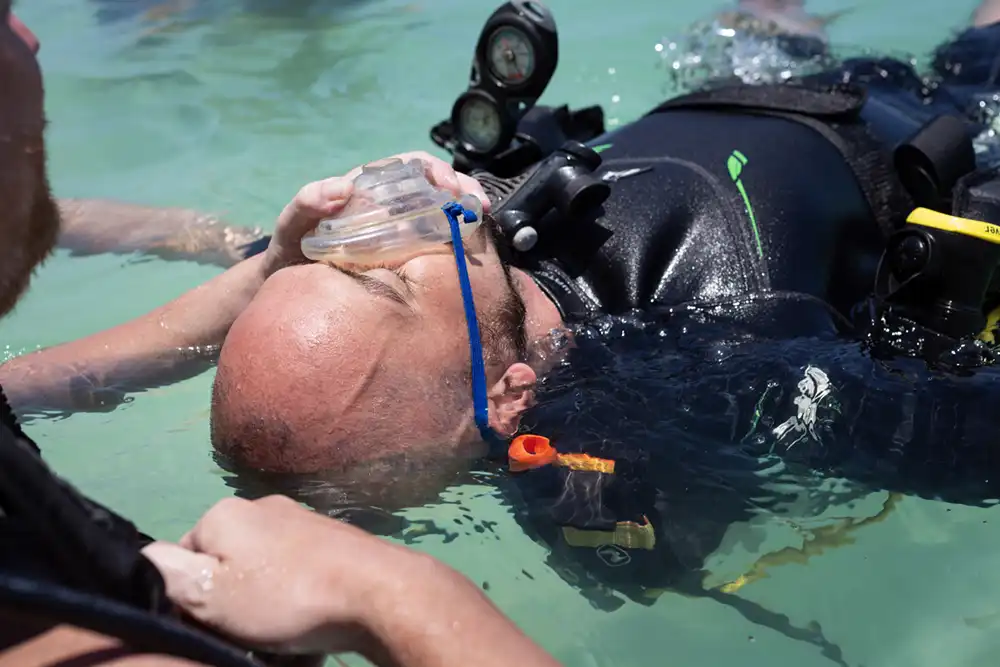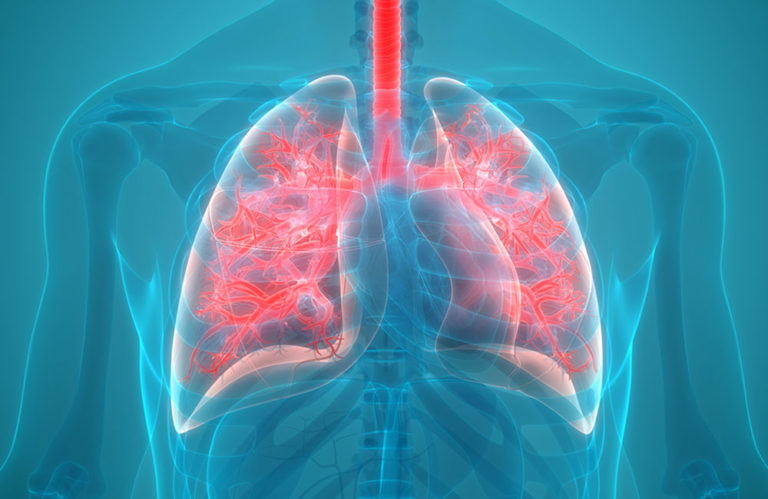
A joint statement by hyperbaric physicians from the South Pacific Underwater Medicine Society (SPUMS) and the UK Diving Medical Committee (UKDMC) has advised scuba divers who have suffered immersion pulmonary oedema not to dive again.
The paper is co-authored by some of the most eminent hyperbaric physicians in the world, including lead author Neil Hanham; David Smart, Simon J Mitchell, Mark S Turner, and Philip Bryson; and Dr Peter Wilmshurst, who first described immersion pulmonary oedema in 1989.
Immersion pulmonary oedema (IPO, or IPE for the US spelling ‘edema’) is a life-threatening condition in which the lungs spontaneously fill with fluid causing the victim to asphyxiate, which can lead to a loss of consciousness and, eventually, cardiac arrest.
IPO is increasingly thought to be the leading cause of scuba diving fatalities, however, as victims tend to succumb while still underwater and the indications of IPO are not obvious during a post-mortem examination, the cause of death has often been recorded as drowning
What causes IPO?
The exact cause of IPO is not certain, but there are well-documented factors leading to its occurrence.
Immersion in water forces blood towards the chest, raising blood pressure in the pulmonary capillaries (the tiny blood vessels permeating the lungs) while at the same time creating a ‘negative airway pressure’, where the pressure of the air in our lungs is lower than the surrounding water.
Although divers breathe pressurised gas underwater, breathing resistance from the regulator and the increased density of the breathing gases at depth can exaggerate the effect of the negative airway pressure.
The differential between the increased pressure in the pulmonary capillaries and the reduced pressure lungs is what forces fluid through the alveoli – the small air sacs in which gas exchange takes place in the lungs – leading to pulmonary oedema.
This pressure differential, however, occurs in all divers during every dive and yet IPO – while a leading cause of fatalities – is extremely rare in the context of the number of dives conducted each year, meaning that other factors must predispose certain people to IPO.
Related articles about IPO:
- British diver’s death may have been IPO linked to alcoholism
- Dive instructor wrongfully prosecuted for manslaughter
- British snorkeller’s death attributed to Immersion Pulmonary Oedema
- Immersion Pulmonary Oedema: the silent killer
- BSAC Immersion Pulmonary Oedema update

Risk factors and symptoms of IPO
The statement addresses several risk factors that have been identified including older age, being female (women are eight times more likely to suffer IPO than men), hypertension (high blood pressure) and pre-existing cardiovascular disease.
Additional external factors include immersion in colder water, severe exertion or excess hydration, and ‘negative inspiratory pressures’ – or increased breathing resistance from the use of diving equipment such as open-circuit regulators and rebreathers.
Early symptoms of IPO include shortness of breath and coughing, sometimes accompanied by blood-stained froth, tightness in the chest and confusion, before the victim loses consciousness.
Divers have reported that buddies suffering IPO appear to be breathing rapidly and will mistakenly signal that they are experiencing an out-of-air situation, even though their equipment is perfectly functional with an ample gas supply remaining.
Dealing with IPO
Should a diver be suspected of experiencing IPO, the dive must be ended immediately and the victim removed from the water as soon as possible.
One particularly significant note in the joint statement is the instruction that safety stops should be omitted during the ascent to reduce the amount of time spent underwater.
Furthermore, the committee suggests that a dive team should ‘consider omitting compulsory [decompression] stops’ if an affected diver is ‘very breathless or distressed’, although it stresses that emergency oxygen should be administered and the local recompression chamber contacted while monitoring for signs and symptoms of decompression sickness.
Once out of the water, other steps that dive buddies can take include keeping the affected diver sitting upright so their chest is in a vertical position, removing any tight diving gear or exposure suit, and keeping them warm.
Any suspected case of IPO – no matter how trivial it may appear – requires hospitalisation and emergency services must be contacted as soon as it is possible to do so.
Diving after IPO
Studies have shown that people who have experienced an episode of IPO are more likely to suffer another. There is also evidence that some people are predisposed to the IPO, and therefore likely to suffer recurrent episodes.
The committee therefore recommends – at the very least – that a diver who has experienced IPO consult a physician with experience in scuba diving medicine before considering diving again.
Furthermore, IPO may be an indicator of underlying cardiovascular disease – especially in older divers – which, the statement notes, ‘warrants a detailed cardiovascular and respiratory assessment’.
In light of the medical complexities surrounding IPO, the authors of the joint statement say that affected divers should remain out of the water.
‘The SPUMS and the UKDMC strongly advise against further compressed gas diving if an individual has experienced an episode of IPO,’ write the statement’s authors.
‘Any decisions about returning to compressed gas diving require careful consideration of the risks applicable to the specific individual and should be made in consultation with a diving medicine physician and/or a cardiologist with an interest in diving medicine.
‘If divers choose to dive again, despite [this advice], they must be fully informed of the risk, including that a recurrent episode of IPO may be fatal.’
‘Joint position statement on immersion pulmonary oedema and diving from the South Pacific Underwater Medicine Society (SPUMS) and the UK Diving Medical Committee (UKDMC) ‘ by Neil Banham, David Smart, Peter Wilmshurst, Simon J Mitchell, Mark S Turner and Philip Bryson is published in volume 54 of Diving and Hyperbaric Medicine


